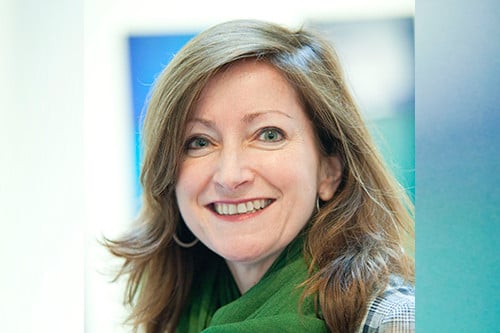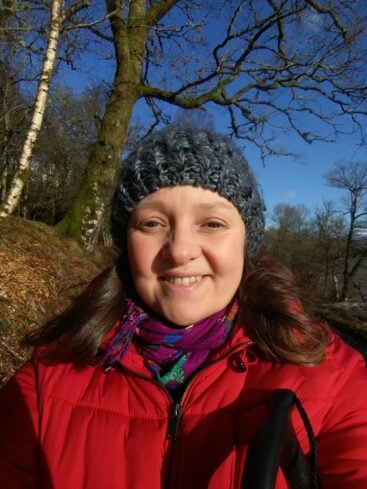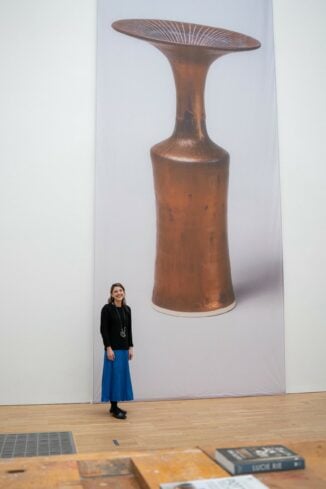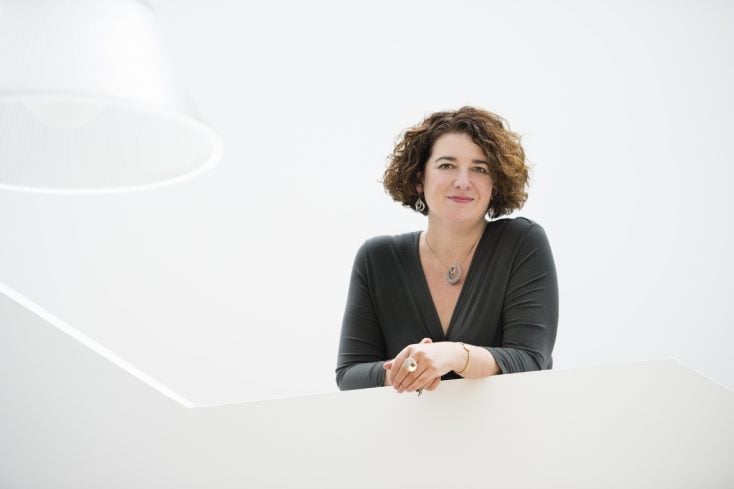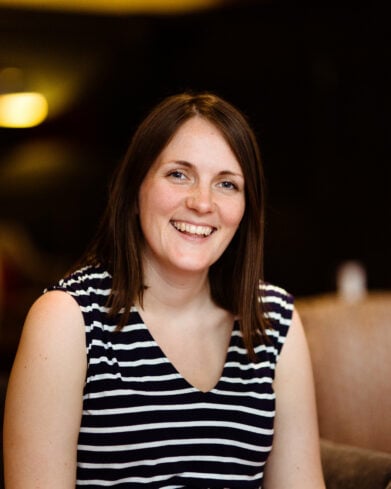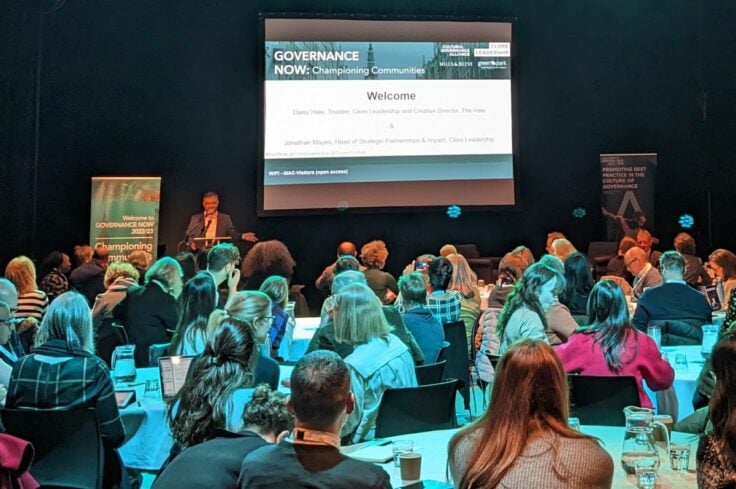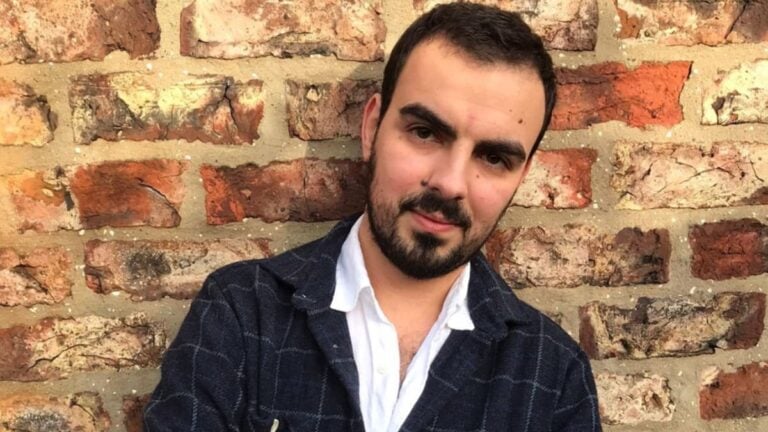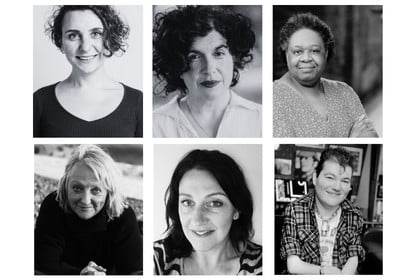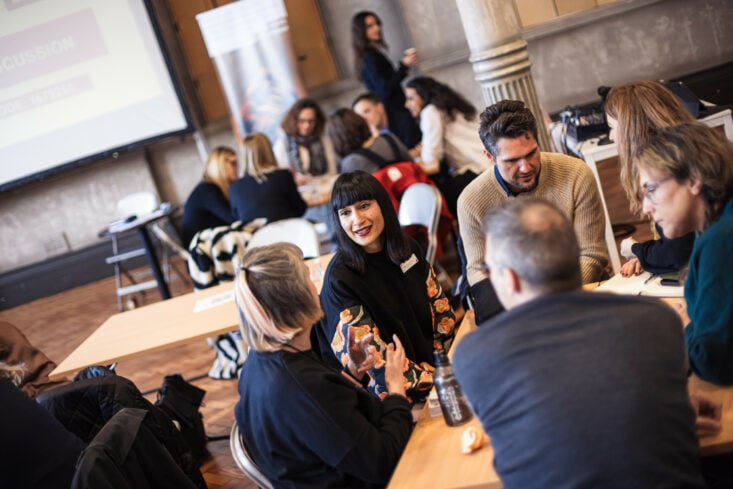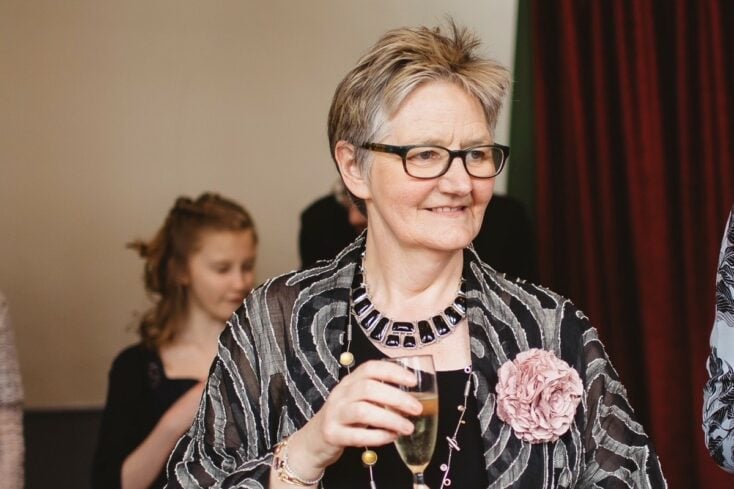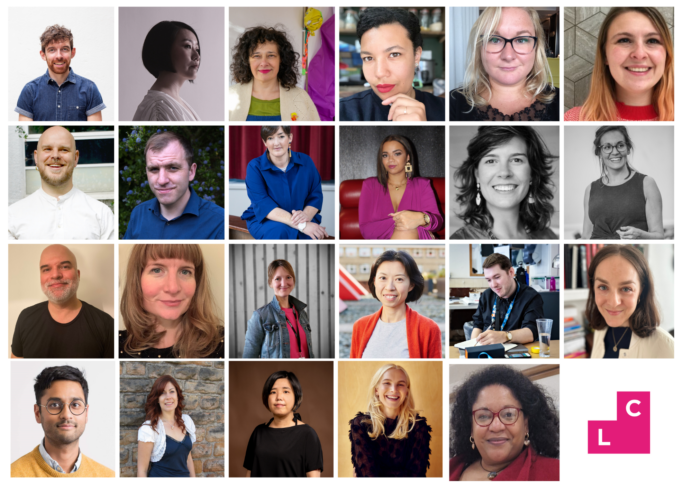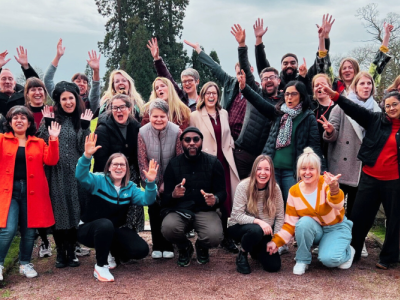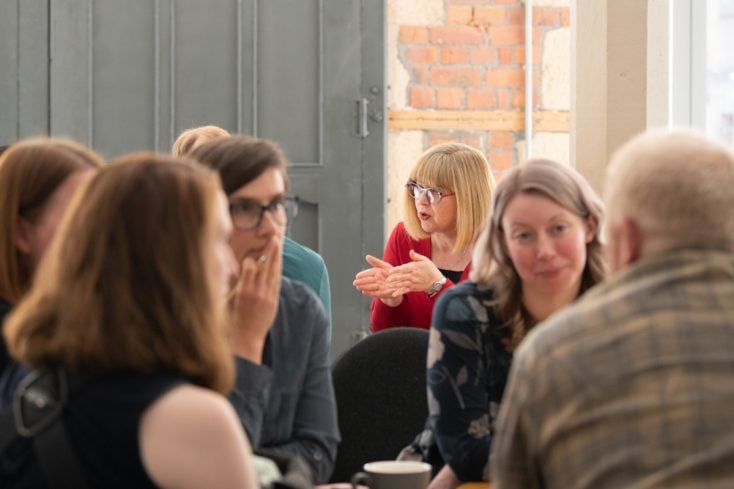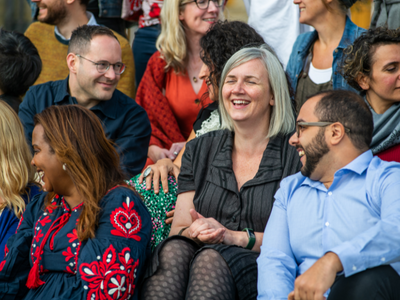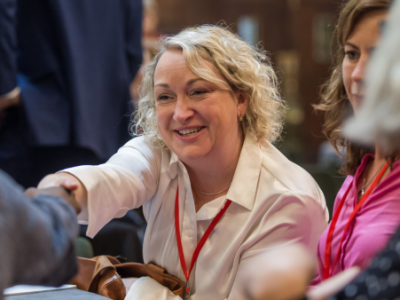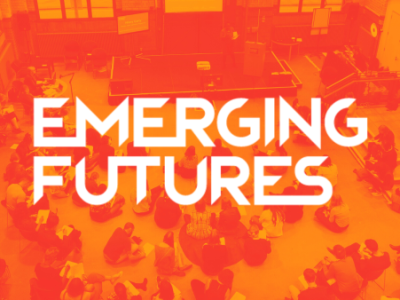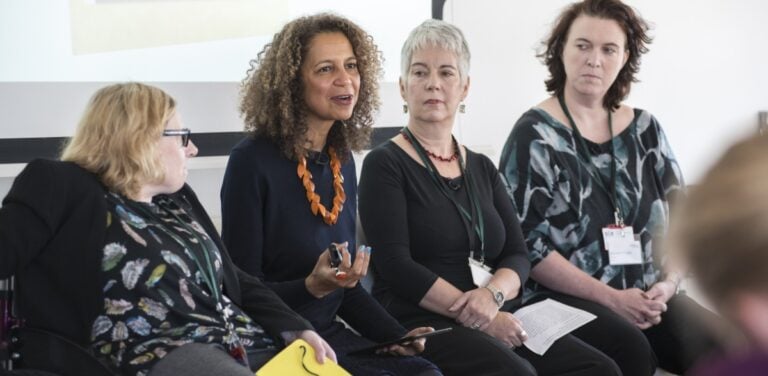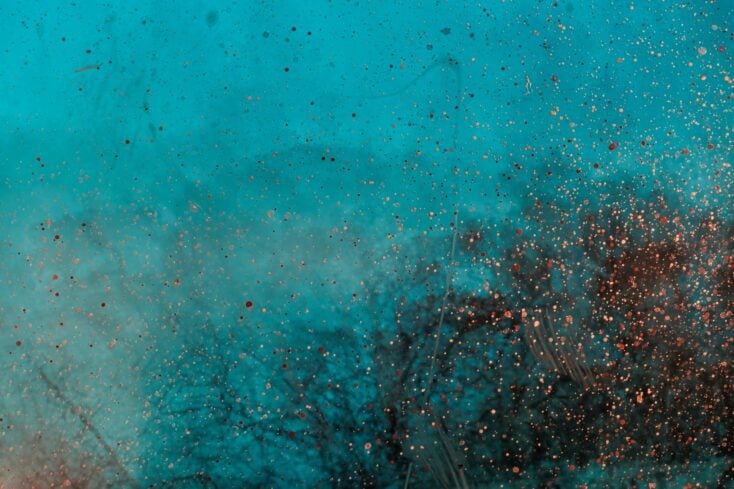Clore Leadership: the origin story
Sally Bacon OBE was Executive Director of the Clore Duffield Foundation for 23 years. To mark the 21st anniversary of Clore Leadership, here she shares the origin story charting the year of research, consultation and programme design that led to the announcement of the first cohort of Fellows in 2004.
This is an abridged version of the piece for the website. You can read Sally’s full article in the links below.
2000-2001: how the wrong proposal led to the right solution
So how did Clore Leadership really begin? As is sometimes the case with new ventures, with happenstance. The brief conjoining of two forces – one educational, globally-recognised and centuries-old, and one small, philanthropic and (relatively) young. Between them they set the process of its evolution in motion, after which the latter quickly moved to reject the former in favour of creating something entirely new, with and for the cultural sector it supported.
By 2000 the Clore Duffield Foundation (CDF) was allocating in excess of £4 million a year to charitable causes, and had been an occasional donor to Oxford University, particularly to one college, Lady Margaret Hall, where its Chair, Dame Vivien Duffield, had studied in the 1960s, and to the University’s Ashmolean Museum, where it had funded an education post for many years. Oxford’s Saïd Business School (SBS) was actively fundraising in the run up to opening a new home, and approached the Foundation with a £2 million proposal to fund a Chair in Cultural Management (not leadership).
By this point the Foundation was already aware that something needed to change in the cultural sector. It was funding many cultural organisations, often supporting the creation of their Clore Learning Spaces, and in some cases was experiencing first-hand their leadership issues. By the early 2000s there had been recent crises at the Royal Opera House (where CDF’s Chair was a board member), English National Opera, the British Museum and elsewhere. Many top cultural jobs were being given to overseas applicants – the Southbank Centre, the Royal Opera House, Tate Modern, and the Royal Ballet School all appointed directors from overseas around this time.
The UK was demonstrably not growing its own cultural leaders effectively, and where home-grown leaders were in post, it is not wide of the mark to state that many of them were white, Oxbridge-educated men. Social justice and white privilege were not terms being widely used by the sector in 2001, although the project started out with the ambition of addressing ‘issues of gender and ethnicity’.
It was also being recognised that these were very difficult and demanding jobs, as the shocking suicides of two senior cultural leaders at the time, both linked to work stress, had distressingly revealed. There was little talk then of mental health and wellbeing in the workplace. Aside from the international recruitment factor, where successful leaders were in post in the UK, it was evident that their achievements could be attributed to what we termed at the time, ‘luck rather than design’: talented cellists running orchestras; talented curators running museums. Very few leaders had actually been trained to do the job they found themselves doing. And very few indeed were women. A report from the then Council for Museums, Archives and Libraries in 2001 described a leadership vacuum in regional museums, alongside professional inertia, apathy, low morale and a lack of aspiration.[1] A similar assessment had appeared in a major report on UK theatres in 2000.[2] This context of concern proved to be a precursor to new thinking about leadership within the UK’s cultural sector. CDF wasn’t the only organisation starting to theorise about what changes would be required, but it was in a position to devise a plan of action and to fund its long-term implementation. Could it devise something that would begin to address sector skills, confidence and resilience?
As 2001 drew to a close, the CDF board agreed a proposal to establish a small working group to examine the problem and to consult on the need, then to devise solutions, which would be submitted to the board at the end of 2002, for implementation during 2003.
2002: A year of research, consultation and programme design
Early in 2002 CDF parted company with Oxford, and set out on a year of research and development to identify what was needed, and then to work out how it might be implemented.
The CDF Director, Sally Bacon, had been introduced to John Holden, then at Demos, by Karen Knight, Director of the Museums, Libraries & Archives Council (MLA), through his work on libraries.[3] CDF’s Director already knew Professor Robert Hewison and connecting Holden with Hewison as colleagues on the CDF project was a key step. They reported to the CDF Director and to the other working group members. Arts Council England (ACE) was represented by Pauline Tambling, then Executive Director (Research and Development), with education and training as part of her portfolio. Karen Knight represented MLA until her departure during 2002. The two non-departmental public bodies were seen at the outset as vital partners in the delivery of a new initiative for the sector, which would need to be a public-private partnership if it was to succeed. Hewison and Holden, with their complementary cultural policy, academic and think tank credentials, effectively reported to Bacon and Tambling throughout 2002. Siobhan Edwards (who in later years was appointed to work as Fellowship Director for a second programme, Clore Social Leadership) provided support for the consultation process.[1]
It was liberating and definitely far more cost-effective to go it alone. The Hewison and Holden-led shift to ‘leadership’ from ‘management’ – the separation of leadership capabilities from managerial competencies – came early on and was crucial.
Research indicated early on that the sector was under-investing in management and leadership development at the most senior levels. This was following a period of financial attrition in terms of arts funding, although of course the late 1990s seems in retrospect to be a time of plenty for the sector in comparison with the post-Covid era. What we did then know was that the percentage of payroll spent by organisations on staff training was tiny in most cases. There was an ‘undercurrent of anti-managerialism’ – training was ad hoc rather than strategic and (importantly) not valued.[4] It was often viewed as remedial rather than developmental. Coaching was rare and, where it existed, clandestine; no-one liked to admit that they needed it or had sought it out. We identified only one senior leader who readily acknowledged that they had benefited from coaching. There was a bubbling desire to inject some design into the process of running – leading – cultural organisations.
A set of guiding principles for the process were not in place at the outset but a set of principles for the programme itself gradually coalesced during the period of research. They are interesting to revisit more than two decades later, and although we might change some of the language now (for example, the inclusion of disability and championing diversity), by and large they all still hold true for Clore Leadership today:
- Listening to professionals and practitioners
- Avoiding duplication of what already existed
- Creating a proposal which would be owned by the sector
- Ensuring whatever was provided would be of the highest quality
- Addressing issues of gender and ethnicity
- Integrating leadership theory with practice
- Recognising leadership existed at many levels and had many titles
- Learning from practical examples of what worked
- Primarily addressing the UK context, but learning from international partners
- A forward-looking focus
- A focus on looking to the long term
- The need to adapt and modify in light of experience at every stage
- Making use of new technologies
- Investing in people, not bricks and mortar
The concept of a ‘fellowship’ was brought to the fore by Hewison and Holden early on, and was also key in considering bringing together a cohort of leaders and building the connection between them: in appointing and investing in Clore ‘Fellows’, the programme was to be as much about the power of the collective group as it was to be about individuals.
By the close of 2002 seven core programme elements had been identified, including intense residential experiences for Fellows at the beginning and end of their programme; periods of individual reflection and research; immersion in new working environments; and buying into existing courses to address specific individual training needs. It was anticipated that twenty-plus Fellows would be appointed each year and they would each spend up to two years on their Fellowships.
The CDF board gave the greenlight for the initiative in December 2002, acknowledging that support would need to be for the long term – we were already talking about a ten-year investment, a rare thing in funding terms.
Clore Leadership opened for applications early in 2004 and the first Fellows were appointed in the summer, before commencing their Fellowships in September 2004.
2024: Looking back after two decades
Twenty years since the first Clore Fellows were appointed it is possible to see that what CDF was actually doing was leading. It would probably not have acknowledged that at the time, but in committing to a research-based approach and consulting widely; building something new; working in coalition with others; committing significant funds and putting a marker down for long-term, serious investment, it was leading the way in terms of setting the agenda for a new approach to cultural leadership, encouraging the entire sector to properly acknowledge its own leadership needs and capabilities for the first time. This was about a foundation working with others to achieve a sustainable impact beyond its immediate grantees for the sector as a whole.
We definitely didn’t know it at the time, but period of the early 2000s was a time of plenty. Clore Leadership has had to contend with financial crashes, economic uncertainty and cuts in public funding, a global pandemic, the evolution of the cultural sector in response to significant and powerful societal shifts with Black Lives Matter, MeToo, Brexit, the Climate Emergency and a digital revolution. Facebook was launched just a few months before the first Fellows were appointed in 2004, after which YouTube, Twitter, Spotify, the Apple iPhone and Netflix all followed in quick succession before the financial crash of 2008.
Through all of this, and because of Clore Leadership’s firm funder-led foundations and its ‘backbone’ strength, it has enabled its many Clore Leaders always to be adaptive, and not just to navigate change but to drive it. The concept of ‘Fellowship’ came to the fore during the pandemic in the spring of 2020, when multiple cohorts of Fellows gathered online to support each other through unprecedented closures. Their shared values, and their connection to each other, are vital in their approach to leading the sector. As Hilary Carty (Director of Clore Leadership since 2017) astutely commented during the first months of the pandemic, ‘optimism is to be found in coalitions’. Today Clore stands for values-based leadership, harnessing potential, generosity, championing diversity, flexibility, and leading in a context of challenge and change. As Sue Hoyle was later to observe, the programme was not simply trying to change the leadership of culture; it also wanted to change the culture of leadership. Sally Bacon wrote in 2014 that ‘Change will always be an important element … enabling Fellows to deal with changes within the political, social and economic contexts in which they work; changing and improving ways of working, thinking, communicating, sharing and funding; and occasionally changing the very language we use to describe what we do.’ As we always knew, whatever model we devised in 2002 was always going to operate in contexts which we could not then foresee, and extend far beyond our original ambitions.
In the early days of Clore Leadership, trusts and foundations, governments, funding bodies, research councils, businesses, cultural organisations and a cadre of existing senior leaders all came together to align around a central mission to nurture the next generation. When it advertised for its first Fellows twenty years ago, Clore Leadership was already one of the most important ventures in CDF’s history. It was the UK’s first cross-disciplinary leadership programme for the arts, cultural and creative sectors. Today it is a testament to its solid foundations, its many funders and partners, the leadership of its three experienced directors and their delivery teams – and to the leaders who have grown along with it – that its impact in the cultural world has been so meaningful and enduring. In the end, the right proposition did indeed emerge from the wrong proposal.
[1] Renaissance in the Regions: A New Vision for England’s Museums (2001) London, Council for Museums, Archives and Libraries.
[2] Boyden Report on the English Regional Producing Theatres (2000) London, Arts Council of England.
[3] MLA was later subsumed within Arts Council England in 2012.
[4] Sir Geoffrey Holland (1997) Review of Management Training and Development in the Museums, Galleries and Heritage sector, London, Museum Training Institute.
